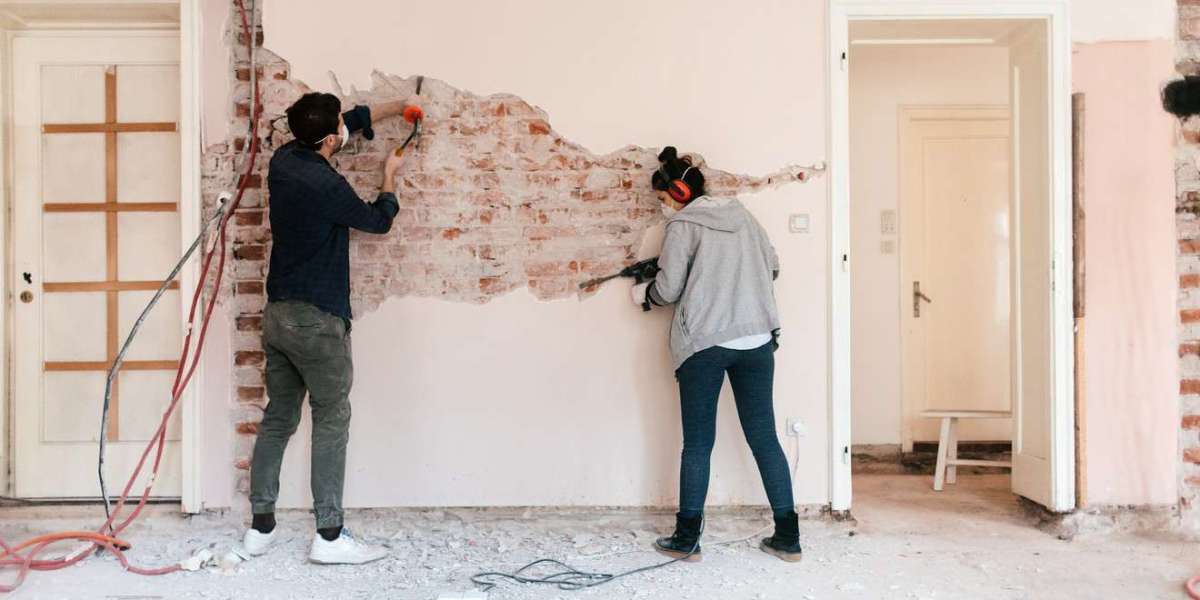As we move further into the 2020s, the concept of home renovation continues to evolve, influenced by shifting societal values, advancements in technology, and environmental awareness. Homeowners today are not just looking to enhance the aesthetic appeal of their properties but are also focusing on functionality, sustainability, and long-term value. If you’re considering a home renovation project in 2025, here are some key trends you should keep an eye on to ensure your renovation stays ahead of the curve.
1. Sustainable and Eco-Friendly Materials
Sustainability has been a significant trend for several years, but in 2025, it’s taking center stage in home renovation projects. Homeowners are increasingly prioritizing eco-friendly materials that minimize environmental impact and reduce energy consumption. From reclaimed wood and bamboo to low-VOC paints and energy-efficient insulation, the demand for sustainable materials is growing.
In addition, many homeowners are opting for products that are locally sourced, reducing the carbon footprint associated with transportation. Eco-conscious choices extend to appliances and fixtures as well. Energy-efficient lighting, water-saving plumbing fixtures, and appliances with high Energy Star ratings are becoming staples in modern home renovations. Moreover, solar panels and home battery storage systems are gaining traction, providing homeowners with the opportunity to generate their own renewable energy.
2. Smart Home Integration
The role of technology in home renovation is expanding rapidly. Smart home devices have moved beyond security cameras and thermostats to include a broad range of features that enhance convenience, safety, and energy efficiency. In 2025, smart home integration is expected to become a standard element of many home renovation projects.
From voice-activated lighting and automated window treatments to advanced home security systems and smart refrigerators, the possibilities are endless. These devices offer homeowners better control over their living spaces, allowing for remote monitoring and automation. Additionally, the integration of smart technology into home renovation projects is often linked to energy savings, as devices like smart thermostats can help reduce heating and cooling costs.
3. Home Offices and Multi-Functional Spaces
The COVID-19 pandemic forever changed the way people view their homes, with many individuals shifting to remote work. As we enter 2025, the trend for home offices and adaptable spaces continues to grow. In many cases, people are opting to renovate underutilized areas, such as spare bedrooms, basements, or attics, into functional home offices.
In addition to dedicated home office spaces, multi-functional areas are becoming increasingly popular. Open floor plans, which allow for flexible use of space, are in demand. Whether it’s a living room that doubles as a workout space or a kitchen island that serves as both a cooking and homework station, flexibility is key. With the rise of hybrid work models, having spaces that can easily transition between work, relaxation, and socialization is a priority for many homeowners.
4. Outdoor Living Spaces
Over the past few years, outdoor living spaces have become more important, and this trend is expected to grow in 2025. With more people spending time at home, the backyard has become an extension of the living area. Home renovation projects are increasingly focusing on creating inviting outdoor spaces that can be used year-round, regardless of the weather.
Patios, decks, and landscaped gardens are being upgraded with comfortable seating, outdoor kitchens, and fire pits. In addition, outdoor lighting and sound systems are becoming standard additions, making these spaces ideal for both day and night use. For homeowners looking to truly embrace outdoor living, features like built-in outdoor fireplaces, pizza ovens, and heated flooring are gaining popularity. Moreover, pools and hot tubs are seeing a resurgence as homeowners look to create personal retreats in their backyards.
5. Biophilic Design
In 2025, biophilic design is expected to be a dominant force in the home renovation industry. Biophilia is the concept of connecting people with nature, and it has been gaining momentum in architectural and interior design. This trend involves incorporating natural elements, such as plants, natural light, water features, and earthy materials, into indoor spaces to create a sense of well-being and harmony.
More homeowners are turning to biophilic elements in their renovations, with living walls (vertical gardens) and indoor plants becoming common in homes. Large windows that maximize natural light, skylights, and glass doors leading to outdoor spaces are popular features in modern homes. In addition, materials like stone, wood, and cork are being used to create a natural and inviting atmosphere within the home. By fostering a connection with nature, biophilic design promotes a more relaxed and balanced living environment.
6. Minimalist and Functional Design
Minimalism continues to be a prominent style in home renovation projects in 2025. Homeowners are moving away from overly ornate and cluttered interiors in favor of clean lines, neutral colors, and simple, functional spaces. The minimalist approach emphasizes the use of quality materials and furnishings that are timeless and versatile.
The trend toward minimalism is also reflected in the demand for multifunctional furniture and clever storage solutions. Think built-in cabinetry, hidden storage compartments, and foldaway furniture that helps reduce clutter and maximize space. This trend is especially relevant in smaller homes or apartments where every inch of space counts.
7. Health and Wellness Focus
As the importance of mental and physical health continues to gain attention, home renovations are increasingly incorporating elements that promote well-being. Homeowners are seeking to create spaces that foster relaxation, reduce stress, and improve overall health. This includes things like improved air quality through air filtration systems, soundproofing for better sleep, and the use of materials that are non-toxic and hypoallergenic.
Homeowners are also integrating wellness-focused amenities, such as home gyms, saunas, and meditation rooms, into their renovations. These spaces serve as personal sanctuaries, providing a retreat from the demands of daily life and encouraging a more balanced lifestyle. Additionally, natural light, proper ventilation, and access to outdoor spaces are key features of health-oriented renovations.
Conclusion
The world of home renovation in 2025 is centered on creating spaces that are sustainable, functional, and reflective of individual lifestyles. Homeowners are looking to make their living spaces not only beautiful but also efficient, smart, and adaptable. Whether it’s incorporating cutting-edge technology, embracing biophilic design, or prioritizing sustainability, the trends for 2025 show that home renovations are about more than just aesthetics—they are about creating homes that are in tune with modern needs and values.








